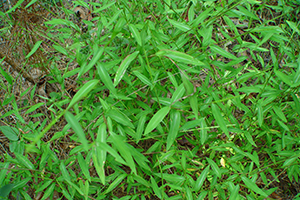Japanese Stiltgrass Allergy

I also found a thick layer 3 inches ish of pine straw has kept the seed bank from germinating in some places where i weeded out the stiltgrass in the late summer the previous year.
Japanese stiltgrass allergy. It was first reported in 1919 introduced as packing material for imported porcelain from china. Japanese stiltgrass or microstegium vimineum is anything but harmless in the united states. It depends on seeds dropped in the fall to survive year to year just like crab grass. So let the plants grow taller than normal and torch.
Most of what i ve read have advised getting rid mowing pulling of it in august to prevent new seed set. Discarded packaging material may have been the source of seed introduction to the united states. Japanese stiltgrass microstegium vimineum trin a. Initially documented in tennessee it is now found across most of the eastern united states and as far west as texas.
I ve also buried it in my clay for biomass at the bottom of a too deep potato trench. Japanese stiltgrass microstegium vimineum is an invasive grass that threatens native plants and natural habitats in the eastern united states native to japan china central asia and india. Japanese honeysuckle and japanese stiltgrass are so aggressively pervasive in our north carolina woodlands and backyards that the best most of us can do is to try to keep them out of selected areas a favorite flowerbed perhaps or a beloved tree in the case of japanese honeysuckle. Japanese stiltgrass is an annual plant not a perennial.
Japanese stiltgrass microstegium vimineum also called nepalese browntop is an aggressive invader of forest lands throughout the eastern united states infestations can impact the diversity of native species reduce wildlife habitat and disrupt important ecosystem functions. Vimineum was originally documented in tennessee in 1919 and is believed to have been accidentally introduced to the united states through its use as a packing material. Camus is an invasive species found primarily east of the mississippi river in at least 24 states. Japanese stiltgrass microstegium vimineum is a widespread invader of woodlands.















